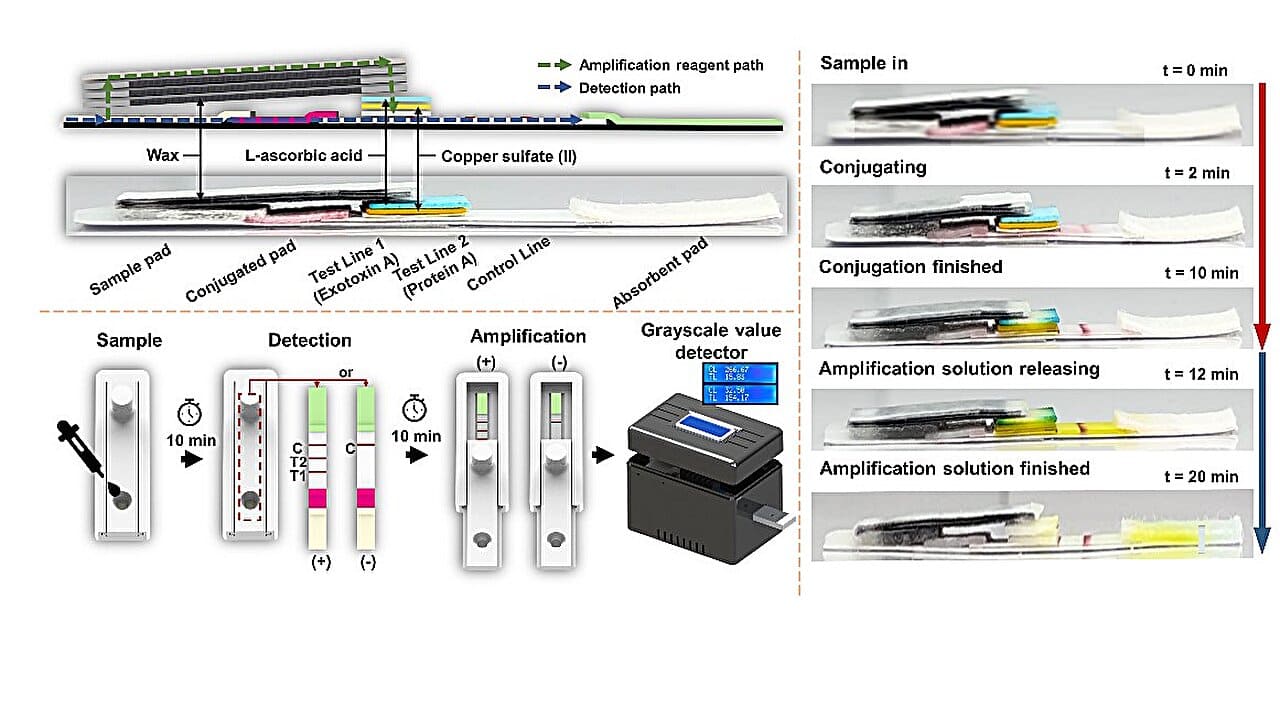Researchers at National Taiwan University have unveiled an innovative diagnostic tool that significantly improves the speed and accuracy of detecting bacterial infections. This technology is designed to enhance the sensitivity to identify harmful bacteria like Staphylococcus aureus and Pseudomonas aeruginosa, which can cause severe illnesses.
"The goal of our research group is to develop affordable and sensitive detection devices for better personal care," said Prof. Chien-Fu Chen. The research is published in Biosensors and Bioelectronics.
This study uses gold nanoparticles combined with a copper-enhancing chemical reaction to amplify the detection signals effectively, making even minute amounts of bacteria detectable. Unlike traditional methods that require complicated procedures or multiple steps, this test simplifies the process into a single step, delivering results in just 20 minutes.
Researchers created a portable device to ensure precise results, minimizing errors from visual interpretation. This reliable tool performed well in clinical trials, detecting bacteria in complex samples like joint fluid, proving its real-world potential. This breakthrough offers a faster, easier, and more affordable way to diagnose bacterial infections.
More information: Yuh-Shiuan Chien et al, One-step copper deposition-induced signal amplification for multiplex bacterial infection diagnosis on a lateral flow immunoassay device, Biosensors and Bioelectronics (2024). DOI: 10.1016/j.bios.2024.116849.
Journal information: Biosensors and Bioelectronics


